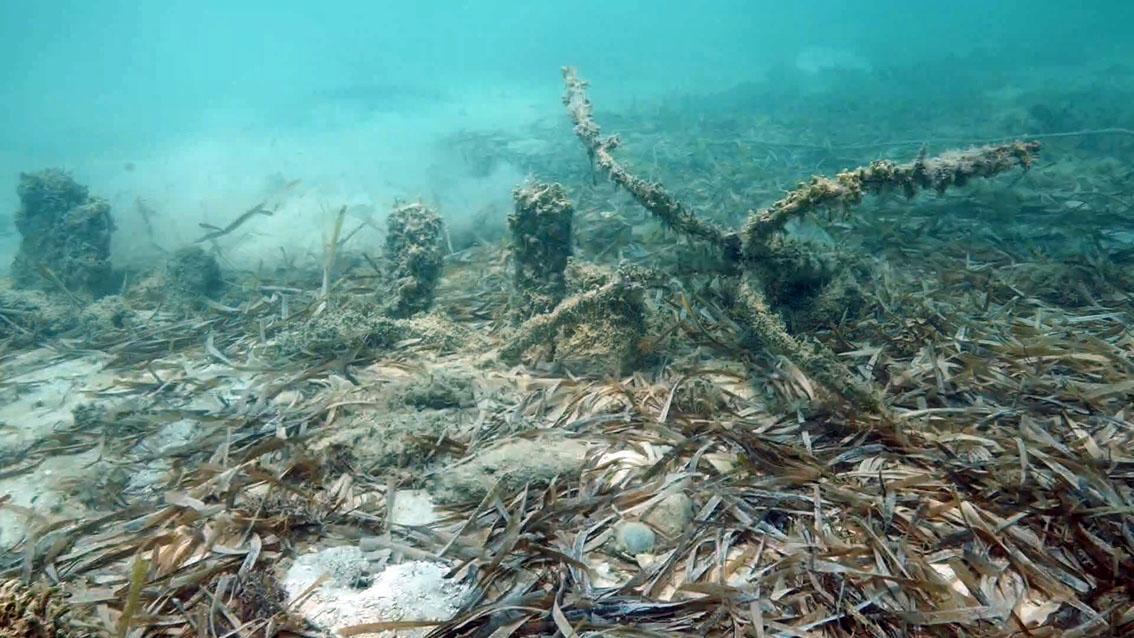Le Dragon Wreck 2018 Project
A Water Barrel
During the survey, close to the two iron sections of a gudgeon, we found what we believe are the remains of a large barrel probably a water cask. This was located in the stern section. Unfortunately since the sand had been removed by the winter storms, a local fisherman’s anchor had got tangled up with the iron staves which were protruding from the sea bed and broken them.
The total length of the barrel was 1.6m and width around 1m. In the photographs you can see that when we originally arrived at the site there was a fisherman’s anchor which had become tangled in the barrel hoops and had broken some of them. We found a broken barrel hoop which fit together the ends of the two broken sections on the barrel. Other sectional pieces were discovered further to the north. One half section had a width of 0.95 m and a height of 0.34m. It is estimated that the barrel was at least 1m wide.
The remains of the water cask/barrel on the stern section of Le Dragon. The iron rebar style local fisherman’s anchor can be seen tangled up
Looking at the barrel from the other side when it was first located
The iron bands were in two sections one at either end and there were four iron bands to each section. The middle did not have any iron bands. There are grooves at either end of all of the wooden staves which made the barrel, which allow for the wooden ends to be fitted. On the initial inspection no makers or owner marks could be seen but we have to remember that we are looking at the inside of the barrel and only about a fith of the wooden staves remain. The wooden staves appeared to be in good condition.
There is a working hypothesis that this is one of the water barrels which was in the hold. There would be a number which would hold all the ships drinking water.
The wood grain of the wooden staves is clearly seen, in excellent condition for being blown up and underwater since 1783




















